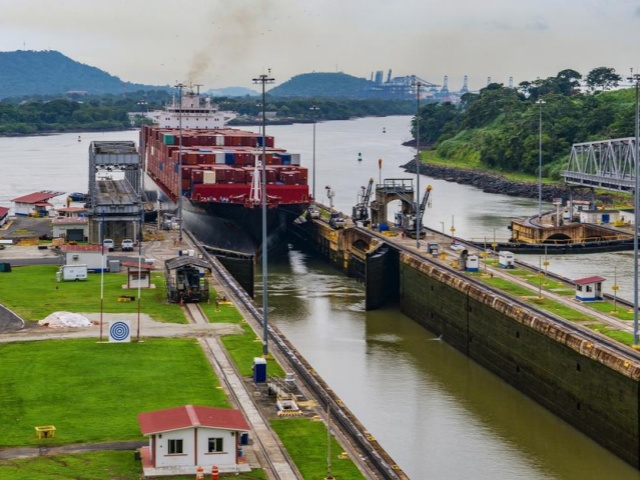What are the reasons for the increase of Sea Freight
The cost of sea freight has been climbing at an unprecedented rate, creating ripple effects across industries worldwide. With global supply chains still grappling with the impacts of the pandemic, fluctuating demand, and ongoing capacity constraints, companies are facing significant challenges in managing rising shipping costs. Compounding these challenges is a lack of transparency in international shipping rates, which often adds another layer of complexity and unpredictability to freight expenses. As demand continues to outstrip available shipping capacity, freight rates are expected to remain high in the coming years. This article will explore the primary causes of rising sea freight costs, the consequences for businesses and consumers, and strategies to navigate these challenging times.

What Causes the Rising Cost of Sea Freight?
The increase in sea freight costs is driven by a combination of factors, many of which are interrelated. Here’s a look at some of the key contributors to these escalating expenses:
1. Ongoing Pandemic Repercussions
The COVID-19 pandemic has had an enduring impact on global supply chains. While some countries have returned to pre-pandemic activity levels, others continue to experience lockdowns and restricted operations, especially in key shipping hubs. This uneven global recovery has contributed to an imbalanced shipping market, as demand for goods remains high but the capacity to transport them efficiently lags behind. Factories and ports in certain regions, especially in Asia, have struggled to operate at full capacity due to intermittent lockdowns and labor shortages, exacerbating delays and driving up costs.
2. Limited Alternatives to Sea Freight
Sea freight remains the primary mode of transportation for international goods due to its capacity to move large quantities of cargo at once. However, few cost-effective alternatives are available, particularly for long-distance routes. Other options, such as air and rail freight, face their own capacity limitations, making them less viable solutions for large-scale shipments. As demand for goods transportation grows and the sea freight industry struggles to keep pace, businesses are forced to absorb higher rates or look for costly alternative modes of transport.
3. Port Congestion and Bottlenecks
Global ports have experienced significant congestion, leading to prolonged wait times and disruptions in shipping schedules. Major events such as the Suez Canal blockage in 2021, congestion at West Coast ports in the United States, and issues at China’s Yantian Port have underscored how vulnerable the global shipping network is to bottlenecks. Port congestion results in longer lead times, reduced shipping availability, and increased operational costs as carriers pass on their expenses to customers. Given the current trends, experts project that elevated shipping prices will persist until at least 2023, with the unpredictable nature of the pandemic further complicating the timeline for recovery.
Consequences of the Rising Cost of Sea Freight
The increase in shipping costs has wide-reaching implications for businesses, consumers, and the global economy. Here are some of the significant impacts:
1. Product Availability Challenges
Higher shipping costs and capacity constraints affect the availability of goods across the supply chain. Retailers are already grappling with limited stock, especially as they prepare for high-demand periods such as Black Friday and the holiday season. The rising costs make it difficult to replenish stock promptly, leading to concerns over potential shortages and reduced consumer choices. These issues also force retailers to adjust pricing to manage increased expenses, ultimately impacting the end consumer.
2. Impact on Global Purchasing Power
As the cost of transporting goods rises, so does the price of the goods themselves, leading to inflation in many sectors. This inflation has a knock-on effect on global purchasing power, as consumers may cut back on spending due to the increased prices of everyday items. For industries reliant on imports, such as electronics, furniture, and certain food products, higher prices could lead to reduced demand, impacting sales volumes and affecting business profitability. If left unchecked, these increases could dampen global consumer behavior and contribute to broader economic slowdowns.
3. Financial Strain on Small and Medium Enterprises (SMEs)
Larger companies may have the resources to absorb the increased costs or negotiate better rates with carriers, but small and medium-sized enterprises (SMEs) often lack these advantages. SMEs may find it difficult to keep pace with the increased costs, leading to tighter profit margins, price increases, or even potential business closures in extreme cases. The financial strain on smaller businesses could have a cascading effect, impacting local economies and job markets.
Strategies to Manage Rising Sea Freight Costs
Navigating the rising costs of sea freight requires a proactive approach. Here are some strategies that businesses can employ to help mitigate these expenses and maintain reliable service:

1. Plan Ahead and Optimize Shipping Schedules
One of the most effective strategies for managing shipping costs is advanced planning. Businesses that anticipate their shipping needs early can avoid last-minute arrangements, which often come at a premium. By optimizing their shipping schedules and consolidating shipments when possible, companies can minimize costs and reduce the risk of delays. Planning ahead also enables businesses to negotiate better rates by booking capacity well in advance, particularly during peak shipping seasons.
2. Consider Multiple Shipping Partners
Working with multiple shipping providers allows companies to compare rates and select the best options based on availability and pricing. Diversifying freight partnerships also reduces reliance on a single carrier, ensuring greater flexibility and potentially better pricing options. Additionally, some companies are finding creative solutions by partnering with smaller, regional carriers that may offer more competitive rates or more efficient services on certain routes.
3. Embrace Digital Freight Solutions
The emergence of digital freight platforms has revolutionized how companies handle logistics. By using digital tools, businesses can access real-time freight rates, assess availability, and even book and manage shipments more efficiently. These platforms provide greater transparency into pricing, enabling businesses to make informed decisions that optimize their shipping expenses. Digital freight solutions also provide valuable data insights that help businesses track expenses, identify cost-saving opportunities, and streamline logistics operations.
4. Reassess Inventory and Supply Chain Strategies
Another way to manage rising shipping costs is to revisit inventory and supply chain strategies. Some companies are transitioning to “nearshoring,” which involves sourcing goods from suppliers closer to their primary markets to reduce dependency on long-distance shipping. By diversifying suppliers and reassessing stock levels, businesses can minimize the impact of supply chain disruptions and mitigate the need for costly, last-minute shipping solutions.
5. Focus on Container Optimization
Maximizing container space is crucial in reducing shipping expenses. By carefully planning how goods are packed and utilizing space efficiently, businesses can minimize the number of shipments needed, leading to cost savings. Businesses can work with logistics experts to develop container optimization strategies tailored to their specific cargo and shipping requirements.
Conclusion
The rising cost of sea freight is a multifaceted issue influenced by pandemic repercussions, port congestion, and limited transportation alternatives. As demand for goods continues to grow, these challenges are expected to persist, with the effects felt by businesses and consumers alike. Rising sea freight costs are already affecting product availability, driving inflation, and placing additional financial strain on smaller businesses.
By understanding the causes behind these rising costs, businesses can adopt strategic measures to mitigate the impact on their operations. Planning shipments well in advance, exploring digital freight solutions, optimizing container space, and re-evaluating supply chain strategies are just a few ways companies can adapt to this changing landscape. While the path forward may be uncertain, companies that stay informed and proactive will be better equipped to navigate the complexities of the modern shipping environment, ensuring that they can meet consumer demands while managing costs effectively.




